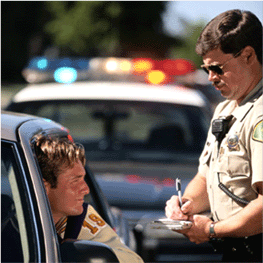|
|||||||
| Log-In | Driver Education | Driver Training | DMV Requirements | FAQs | Compare | Contact Us |

Originally Online Course Now Only $9.75 with internet discount (including DMV Certificate)
We are one of the oldest and largest online drivers education schools. We can offer low prices due to our advanced internet technology and the volume of students that take our course each month. Sign up for our online drivers ed course and begin immediately. Cal-Driver-EdPacific High School Request a Duplicate Certificate of Completion Cal-Driver-Ed is operated by Pacific High Schoola private high school operating under the California Education Code and registered with the California Superintendent of Public Instruction. We offer a quality high school education to all Californians regardless of race, color or creed. While taking classes through Cal-Driver-Ed, The student will be concurrently enrolled in Pacific High School and their local high school. |
|
|||||||||
| | FAQ | Site Map | |||||||||
|
|||||||||
|
Our Driver Education Course is Accepted by the California DMV View Our California DMV Verification Letter Sample DMV Driver Education Certificate of Completion  "Cal-Driver-Ed is a pioneer in the field of online driver education. Over 80,000 California teenagers have taken their courses and are driving today." "I recommend Cal-Driver-Ed for home study driver education." The following quotes are excerpts from a California DMV Study on the Effectiveness of Home-Study Driver Education (PDF) dated April 2003: "Home-study students performed just as well or better than classroom students ... " "Home-study courses may also have the additional benefit of increasing parental involvement in their teen's learning process, which has been shown to be an important factor ..." |
|
Already Have Your License? Traffic school will help keep your auto insurance costs lower if you receive a traffic ticket. Every licensed California Driver must have auto insurance to drive a vehicle in California. Proof of insurance must be provided to the California DMV when you obtain your drivers license (not your learners permit). Proof of auto insurance must also be provided to DMV when you register or renew the license on a vehicle you own. |
|
Cal Driver Ed is proud
|
f 3
An essay by one of our students:
Introduction
Getting your license may seem like a daunting process. There are apparently endless forms, requirements, and tests that stand between you and driving. But if you’re armed with the right information, going through driver’s ed and getting your license can be an easy and informative process.
Driver’s Ed
You’re eligible to begin the process if you are at least 15 _ years old, and younger than 18. If you’re over 18, then you won’t need a learner’s permit before you get your license. After taking a traffic school driver’s ed course and enrolling in driver’s training, you may take the written component of the DMV driving evaluation. Driver’s ed courses teach road safety, traffic signs, and related material, and may be completed online, through private companies, and sometimes through high schools. Driver’s training is behind-the-wheel practice with a certified instructor. The permit you receive is not valid until you have completed your first driver’s training session.
The DMV
Remember, it is essential that you are prepared when you go to the DMV. Review the list of requisite application materials and have your application fees ready. This will expedite the process and prevent unnecessary delays and wasted trips. It might be helpful to create a list of the items you will need (for example, birth certificate, money), and review the list before you leave.
The Driving Test
After you have had the permit for six months, schedule an appointment to take a driving test at the DMV. An evaluator will ride in your car with you, ensuring that your vehicle and driving skills are competent, legal, and safe. He or she will make sure that you are familiar with the hand and mechanical turn signals, traffic laws, and safety precautions. The evaluator will also verify that your vehicle’s signals, hazard lights, and other functions are operational, so make sure your car is in fair condition and that you are familiar with its control panel. If you pass the test, you will be granted your driver’s license.
The Driver’s License
However, it is important to remember that this license is provisional. This means there are certain additional rules you must follow during your first year of driving. You may not drive between 11 PM and 5 AM, and you cannot transport passengers under the age of 20 unless accompanied by a licensed driver over 25, or a parent or certified instructor. There are some exemptions made for school and work-related activities, but these instances require special parental endorsement.
Failure to comply with these rules could result in fines or other disciplinary actions. It’s better not to risk it, and the rules are designed to prevent accidents and save lives. One of the problems behind teen accidents is over-confidence. Look at you first year of driving as an opportunity to hone your skills, and understand that you’re still acquiring the experience necessary to be a safe driver.
When you turn 18, your license will no longer be provisional. You may keep your existing license, or pay a $20 fee for a new one.


